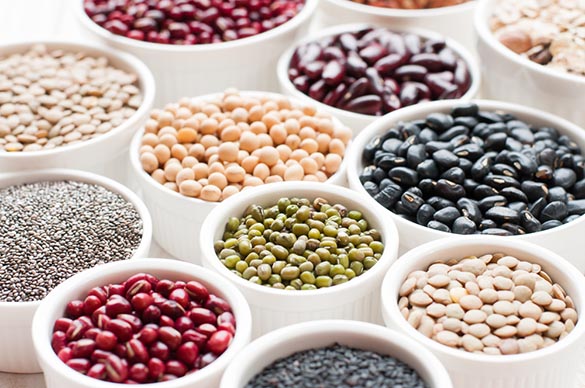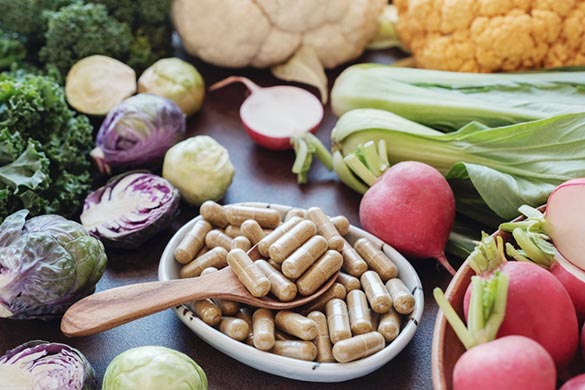![What-the-heck-are-Starches[1]](https://thelifepilot.com/wp-content/uploads/2022/11/What-the-heck-are-Starches1.jpg)
If you asked this question to someone who wasn’t a nutritionist, they most likely would give an example rather than an explanation. That is because the common knowledge of edible starches is foggy, at best. They’re not a ‘food group’, but are consistently demonized by their association with carbohydrates. So what are starches, really?
It’s actually very simple. Literally speaking, starches are just long chains of glucose. These can be found in any variety of foods. The most common include different varieties of bread and bread products, like pastries or baked goods. But anything from glazed donuts to chocolate chip muffins to ‘everything’ bagels are technically considered a starch.
You may have heard that potatoes are not a vegetable, but a starch. This is true: sort of. See, potatoes are a vegetable, a root vegetable to be specific. And it is a starch. Many vegetables can be starches, but not all starches are vegetables. For instance, oats are a grain as well as a starch. Corn is another example of a starchy vegetable.
What are Resistant Starches?

So, what’s the difference between normal starches and resistant starches? It’s in the name! But what do resistant starches resist? Digestion.
This doesn’t mean that the body won’t digest them at all, however. Rather than being digested by the small intestine, resistant starches take a while longer. Namely, until they reach the large intestine. Because of this, resistant starches don’t raise glucose levels, unlike their notorious non-resistant cousins.
This can be useful for tons of reasons. Controlling glucose levels is crucial for diabetics, and also can help those looking to lose weight. Furthermore, gut health is vastly improved when the fermentation in the large intestine makes more good bacteria for your body. This can help treat and prevent constipation, lower bad cholesterol, and decrease risks of colon cancer.
How to Make Starches More Resistant

Adding heat to most starchy foods- rice, for example- can fundamentally change the structure of the food and break down the bonds between glucose, destroying their starchy properties. If served hot, these sorts of foods- potatoes, plantains, oats- will not contain enough long glucose chains to be resistant to digestion in the small intestine. They’ll digest too quickly to make it to the large intestine and ferment, which is what resistant starches are so necessary for.
However, once these foods are cooled, they have almost just as much resistant starch as they did before cooking. This is because the cooling process gives the glucose chains time to reform and reattach to one another, though often in slightly shorter chains. This is enough to get the food to the large intestines to start making all of that good bacteria.
Once heated and fully cooled, the glucose chains remain formed even when the food is hot again. Just another reason to love leftovers!
How to Add Resistant Starches to Your Diet

Try cooking things like rice, potatoes, beans, pasta, and plantains a day before you intend to use them. By letting them cool overnight in the fridge, you allow those glucose bonds time to reform and get back that resistant starch power. The next day, you have the base of a meal finished and a good helping of resistant starch already waiting to be reheated and used.
Oats, on the other hand, can be eaten raw. A new trend in food fashion is soaking oats in yoghurt or milk overnight, along with berries and other toppings of your choice. These are known as simply ‘overnight oats’ and are gaining popularity on Instagram and #Fitstagram. Deservedly so, since overnight oats are one of the best sources of probiotics and can greatly amplify gut health.
Beans and lentils can be cooked and cooled similarly to potatoes and rice. But since legumes in particular have the highest amount of resistant starches, they can even be eaten without cooling and still maintain lots of staying power. This is because legumes in particular have very fibrous cell walls, which are naturally resistant to digestion and don’t break down in cooking processes.
Uses of Resistant Starches

One huge benefit of resistant starches is a prolonged feeling of fullness. This can greatly reduce the amount necessary to be satiated by food, even when eating a single portion. This leads to a lessened calorie consumption. Eating resistant starches is an excellent way to reduce portion sizes while still feeling full at every meal.
It also improves insulin sensitivity, which is a huge bonus not only for diabetics or pre-diabetics. Everyone is susceptible to insulin sensitivity, which can cause devastating chronic illnesses even in previously healthy individuals.
Resistant starch also helps to lower blood sugar levels after not only one meal, but the meal after it. This means that if you eat a resistant starch with breakfast, not only will your blood sugar be lower after breakfast, but it will be lower after lunch too.
Sound Like A Lot to Digest?

Your full diet and exercise routine will have an effect on your overall health. But sometimes, even doing everything right isn’t enough.
If you have issues with digestion, as many people do, an increase in resistant starch intake can help. It can also help you lose weight, if controlled carefully. If this seems a little tedious or beyond your skill set, don’t worry! There is always more than one way to go about things.
Fortunately, there are still avenues to pursue! For one, consider a natural supplement. Many natural formulations exist to help. One of our favorite formulations is Ultimate Garcinia, which can be found here!






